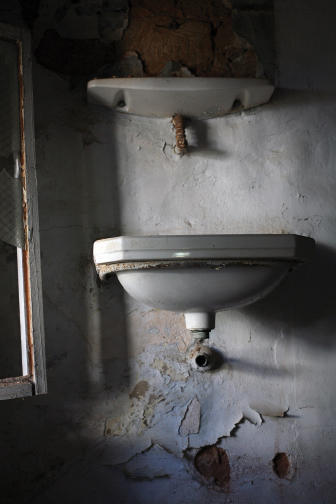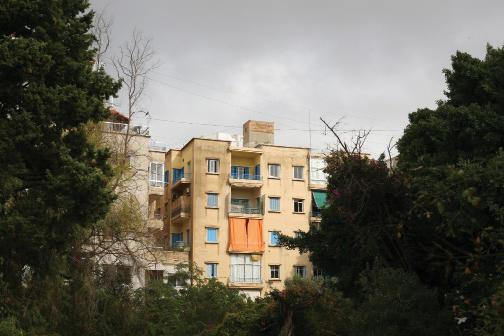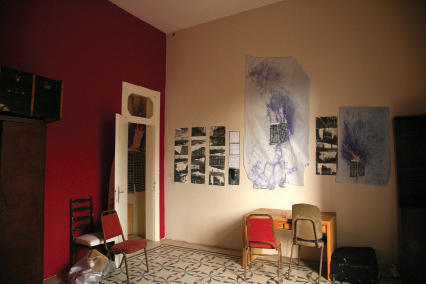
Beirut
Beirut Every Other Day
Sanayeh House
September 22–28, 2009
Perhaps the most important achievement of Beirut’s contemporary art scene in the last ten years has been the successful development of alternative models for the production and presentation of new work. In a city with only a skeletal commercial gallery system and no modern art museum or contemporary art institute, organizations such as Ashkal Alwan, Beirut DC, and the Arab Image Foundation have taken it upon themselves to give artists the space and time to create projects that are critically engaged and blissfully free from market pressure. But as these organizations have grown into institutions in their own right, and as the situation of contemporary art in the wider region has changed (particularly with regard to funding), the nimble and improvisational quality of these alternative structures has become harder and harder to sustain.
Enter the 98 Weeks Research Project, one of several new Beirut-based arts initiatives that is innovating the art scene all over again.
Established in 2007 by up-and-coming curators Mirene and Marwa Arsanios, 98 Weeks is a spaceless venture that emphasizes process over final product. For each research project, the Arsanios cousins choose a theme and then devote roughly two years to exploring it at length, through reading groups, symposia, conferences, conversations among artists, and workshops that are, in theory at least, tight, concentrated, and intense. Artists such as Tony Chakar and Marwan Rechmaoui have also had occasion to lead focused artist talks, which have been as valuable for audiences as they have been for themselves.

The theme or idea behind the first 98 Weeks adventure, Beirut Every-Other-Day, is the study of spatial practices — how a contemporary artwork can be generated from the exploration of a particular place; how one perceives, experiences, or inhabits that space; the social, political, cultural, or economic relations that such a space gives rise to; and the sensitive or subversive possibilities that are available to artists if and when they want to alter it. It kicked off a year ago with a public seminar led by Cuauhtémoc Medina, a critic and curator from Mexico City, on the work of the artist Francis Alÿs. This past September, the Spanish artist Lara Almarcegui, along with the Swedish curator Cecilia Andersson, traveled to Beirut to lead a workshop, entitled “The Ruin in the City,” with twenty-four young local and international artists. (In December Alÿs will be in Beirut for a second workshop, to be followed by a third in February with the Italian art collective Stalker.)
“The Ruin in the City” was almost painfully brief. Remarkable, then, was the fact that the public presentation of the workshop, held on a single day in Sanayeh House, a new art space located behind the eponymous garden, turned out to be extremely effective as a self-contained exhibition. This, of course, was no one’s intent. The point of the workshop was simply to provoke participants and get long-term projects off the ground, not to produce fully realized works. Yet somehow an accomplished show emerged.

Eduardo Balanza, from Spain, interpreted the study of spatial practices to mean the discovery of a forgotten economy for Arabic music on cassettes and vinyl. He created a room-sized installation entitled Radio Cobra that was packed with promising ephemera related to Umm Kulthum, Farid El Atrash, and Martin Luther King, Jr., along with Jeff Chang’s Can’t Stop, Won’t Stop: A History of the Hip-Hop Generation.
Juliáno d’Angiolillo, from Argentina, produced a terrific video about the pine forest in Beirut, only small portions of which are accessible to the public. Franziska Pierwoss and Siska, both Beirut residents, conducted a study of neon signage in the city that yielded a surprisingly poetic slideshow, suitably installed high above viewers’ heads in the rafters of an abandoned room. Christophe Katrib spent hours and days hiding out (literally) in a derelict house situated in a thicket of woods overlooking the sea, incongruously located in the middle of Ras Beirut, and from the sounds and images he collected, made a stunning, at times haunting, work that speaks volumes about the push and pull, attraction and repulsion, beauty and horror of living and working in the Lebanese capital, or, perhaps more crucially, in any city suffering a surfeit of history.
Karine Wehbe, who has previously exhibited paintings and photographic montages, introduced a new project that may have epitomized the 98 Weeks work ethic. Taking as her starting point the urban carcasses of now-shuttered nightclubs that had provided the backdrop for Wehbe’s adolescence in the early 1990s, the artist provided a new twist to an old idea about collecting documents and constructing archives related to a specific place and time that has been largely forgotten or overlooked — not necessarily the civil war or the reconstruction, in this case, but the space in between. Through photographs both staged and found, along with newspaper clippings and oral testimonies, Wehbe considered how architecture and urban geography informed the wilder days of a generation lost between two highly polarizing eras.
Wehbe’s work, tentatively titled Jet-Set, and the workshop as a whole, set itself apart by using Beirut more as a site than a subject and by relieving artists of the pressure to work like their predecessors. The arrival on the scene of 98 Weeks seemed to be a sign that a new generation is ready to strike out on its own.